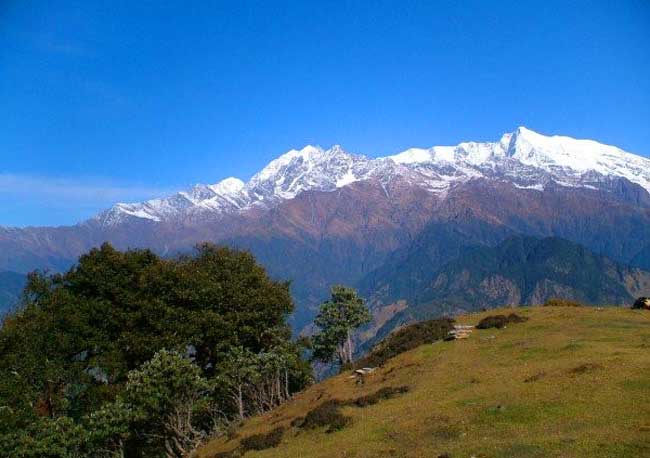

Pindari Glacier Trek
I have always treasured the outdoors as a place to escape, when the focus on one task provides respite from hundreds of menial jobs that flicker around our brains day by day. I love the simplicity of life when your task for the day involves nothing more than surviving a journey from A to B.
As a lover of the mountains, multi-day trekking has always appealed to me, and stories of heroic mountaineering escapades in the Himalayas filled my imagination for many years.
Trekking in the Himalayas
I decided to go to India as it has many trekking routes which, whilst they might not have the glamour of the better-known Nepali treks, such as the Annapurna circuit or Everest base camp, they also tend to have far less trekkers.
One of these treks is the Pindari Glacier Trek, found in the Kumoan Himalayan region in Uttaranchal, India.
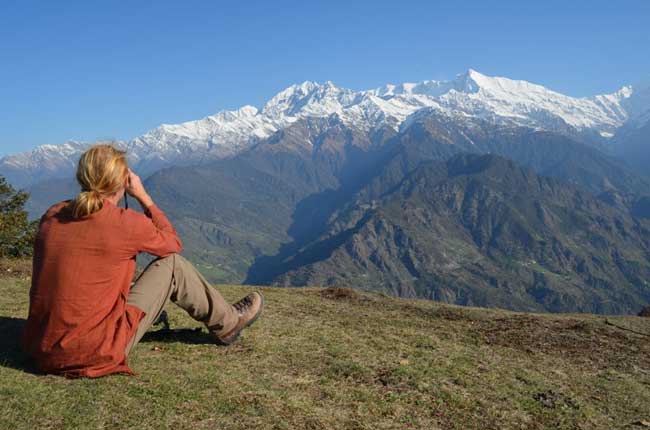
The Pindari Glacier trek is a “there and back” trek that covers 94 km (58 mi.) of steep and spectacular terrain. The trek itself is relatively achievable, in terms of distance, terrain and altitude, rising to around 3600 meters (11,811 ft.) at its highest point.
It travels through spectacular Himalayan high mountain scenery skirting the edge of the Nanda Devi Biosphere Reserve with spectacular views of the high peaks of Nanda Devi (7816 m/25,643 ft) and Nanda Kot (6861 m/22,510 ft.).
My partner and I had arrived in India nearly two weeks before and craved silence to sooth senses rubbed raw by the chaos of Delhi. We chose the Pindar Valley, since we were starting our trek in mid-October, which meant snowfall. Snow might make treks inaccessible without specialist equipment.
The Pindar Valley and much of the trekking route are old trade routes that linked India with Tibet, leaving a basic infrastructure of footpaths and huts. The prevalence of huts, a combination of government and private, with wardens who would happily provide tea, rice and dhal, meant we could complete this trek without carrying camping equipment. And since we are independent in nature and were in search of simplicity, we preferred not to employ porters and guides.
We took buses from Delhi to Nainital, and then on to Bageshwar, each step allowing a gradual unwinding of knots tied tight by the noise and bustle of the city.

Setting Off from Loharkhet
Following a short drive in an open-backed jeep, we shouldered our bags and set off on foot from the small village of Loharkhet. The transformation from city to countryside was gradually completed as we climbed steep switchbacks on a track that went from the width of a bus to a yak.
As we rose, the terrain became greener. Dust and rock was replaced with grass and trees and the sounds of horns and engines were replaced with the dull clang of goat’s bells and the twittering of birds in the trees.
After spending the night at a basic and deserted government-administered hostel in a hamlet on Dhakuri col, the trail rolled downhill through forests of Chestnut and Rhododendron to the last village on the trail, Khati.
Arriving at Khati
A small village, only accessible on foot, Khati has around 300 residents who live above the fertile banks of the Pindar River in colourful houses tightly packed together surrounded by impressive mountain terrain. Residents have struggled as the creation of the Nanda Devi biosphere reserve has limited access to their traditional hunting and agricultural grounds. Thus, for these residents, trekkers like us were both a blessing and a curse, providing income but increasing government level regulation and pressure on the limited natural resources.
Despite this, we felt welcomed like long lost friends. We arrived at a guesthouse and, through a combination of mime and perseverance, we were made to understand that we had arrived on the night of the Hindu festival Diwali.
Despite the guesthouse being technically closed, we were accommodated, and the owner took us to his own house in the village to watch fireworks and feed us alongside his family.
Whilst not officially part of the Pindari Glacier trek, we chose to spend an extra night in Khati in order to take a path up the Sunderdhunga Valley.
After crossing the stunning turquoise waters of the River Pindar, we followed a path through alpine forest to the hamlet of Jaitoli. Unseasonably high levels of snow above Jaitoli made it unwise for us to continue up this valley, but while our progress was stopped, our disappointment was eased by a meal that remains, to this day, one of the best and most memorable I have ever eaten.
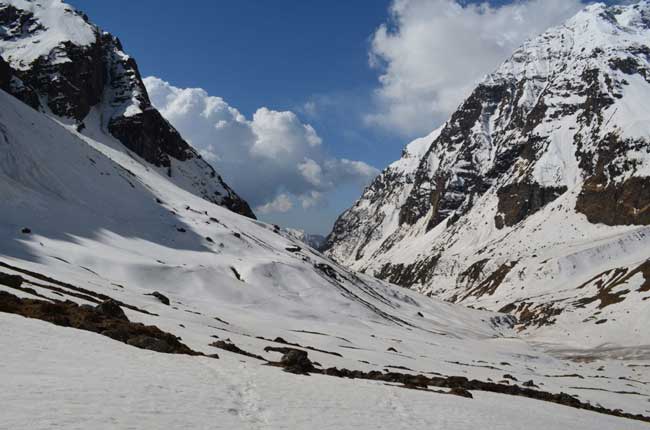
Outside a farmer’s hut in Jaitoli, a farmer leapt over a wall to collect spinach from one field, before sprinting across the valley, a full 500 meters, to dig up potatoes from another. He returned panting from the effort, to add onions and spices to the freshest of ingredients and proceeded to cook us the most flavoursome Sabji I have not only ever eaten, but imagined.
The Pindar Valley
After spending another night in Khati, we continued up the Pindar Valley through crowds of inquisitive and playful monkeys gorging on the abundant fruit and seeds. The footpath wound high above the roaring River Pinder over footbridges hovering on the precipice between exciting and terrifying.
Throughout the trek, small shepherd huts offered cups of “chai”, in this instance black tea sweetened with condensed milk. Sickly in everyday life, this chai was the perfect antidote to tiring muscles and dropping temperatures as altitude was gained and we reached Dwali.
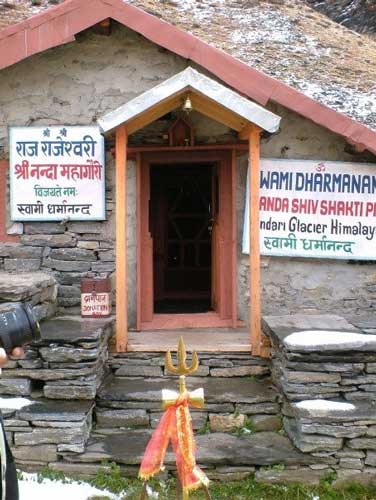
Smiling at how close we had come to spending “Divali in Dwali”, we climbed the last stretch to the two basic accommodation huts that, along with shepherds’ huts, comprise Dwali.
The altitude and dropping sun made the air bitter as we feasted on the ubiquitous chapatis, dhal, eggs and rice that were the staple diet of this trek.
A small group of Indian trekkers and their porters, along with a pair of Canadian trekkers, joined us for an evening by the warm glow of a fire.
The comradery of shared experience eased the awkwardness of small talk until the siren call of sleep proved too strong. As the fire dwindled during the night, the cold caught us in an icy grip, our thin summer sleeping bags wholly inadequate. We piled blankets high on top of us to keep the cold at bay.
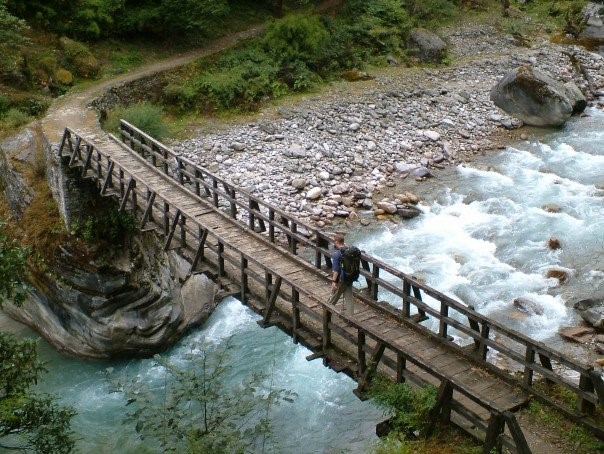
Pindari Glacier
We set off towards the Pindari Glacier early the next morning in increasingly baron mountainous terrain. The onset of winter brought patches of hard packed snow that had to be carefully negotiated as the footpath became rocky, narrow and in places, hard to follow.
The silence around us was deafening as the high point of our trek approached. High above the Pindar River, the noise of our footsteps and the occasional call of sheep and goats in the distance, were all that interrupted our thoughts.
Occasional conversations meandered to nothingness, only to be resumed hours later. As the sun rose, it shone majestically on the peaks that are the guardians of the Himalayan Kingdom.
We reached zero point, a viewpoint near the base of the Pindari Glacier, at the onset of winter. Choices that had left us ill-equipped to reach the glacier itself meant that for us, as with most trekkers, this was our destination.
We huddled together and ate in the splendour of the mountains. The innocuous trickle that would become the roaring river, that formed the soundtrack to so much of our trip, could now be seen as a trickle of snowmelt at the foot of the Pindari Glacier.
Walls of ice, seemingly frozen in time, but constantly moving and shaping the landscape that dwarfed us, were truly humbling. We used a well-thumbed guidebook and map to identify the peaks that dominated the landscape.
Plans were made, plans to return and climb these peaks, plans that seem so achievable from the altered mindset of someone on a journey, yet somehow so much harder from the warmth of your sofa.
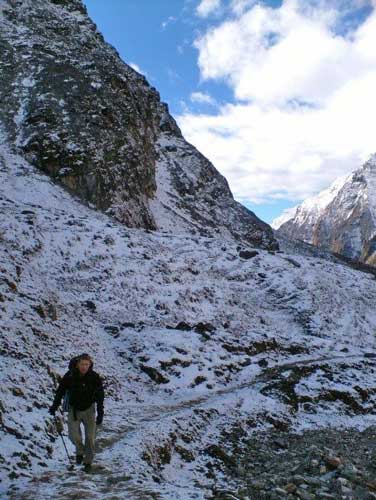
This, for me, was the point of this trek – not to reach the glacier, but to reach the point where we can view things differently.
The Pindari Glacier trek was rewarding. The diversity of the scenery – from small mountainous villages, through woodland and glorious riverbank to harsh high mountain terrain – kept us enthralled. The people we encountered from villagers to nomadic sheepherders and the few other trekkers were, to a person, warm, helpful and welcoming.
However, for me at least, the real destination was the place that allows you to look at your life from a different vantage point. It’s a view that comes from moving away from life’s everyday existence to interacting with people who have very different experiences of life and one I seem to reach best from simplicity.
If You Go
https://www.euttaranchal.com/tourism/ – A guide to tourism in Uttaranchal including information on the Pindari Glacier Trek
https://www.kmvn.gov.in/details/tripplanning# – Pre-book a room at one of the basic government administered KMVN huts on the route. Note that pre-booking is not essential and removes an element of flexibility, but can be booked ahead for those who prefer to do so.
https://theoff.info/Adventure-Travel/himalayas-for-beginners/2-adventure-gear-rental-stores-in-uttarakhand/ – Information about hiring trekking and mountaineering equipment in Uttaranchal can be found here.
Author Bio: Dan Gowanlock is an outdoor enthusiast, travel addict and writer, originally from the UK, who currently lives with his young family in Peru. His website Dan Gowanlock Writing Services will be live soon.
